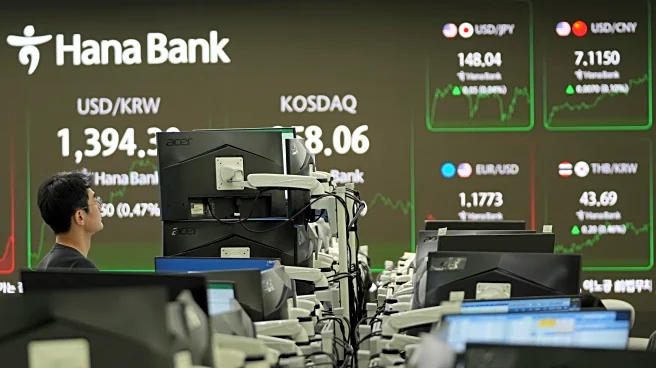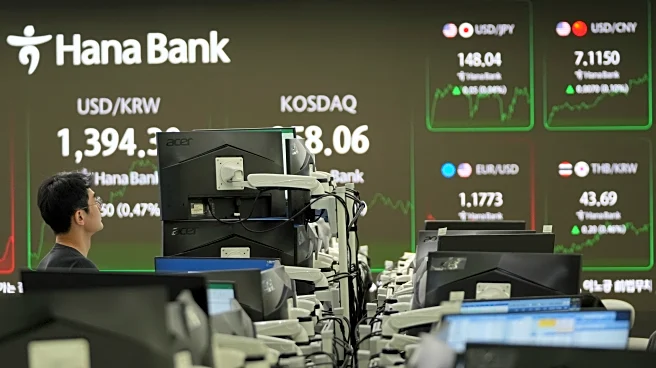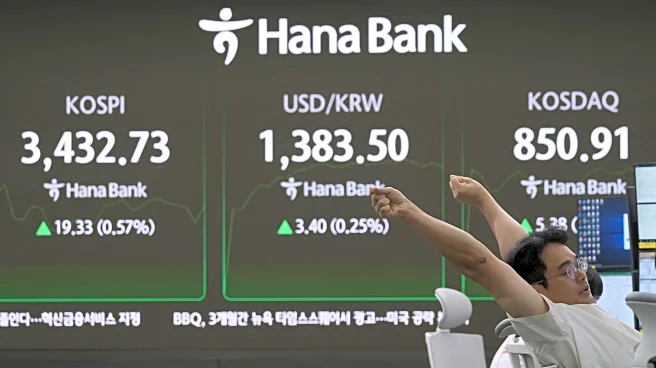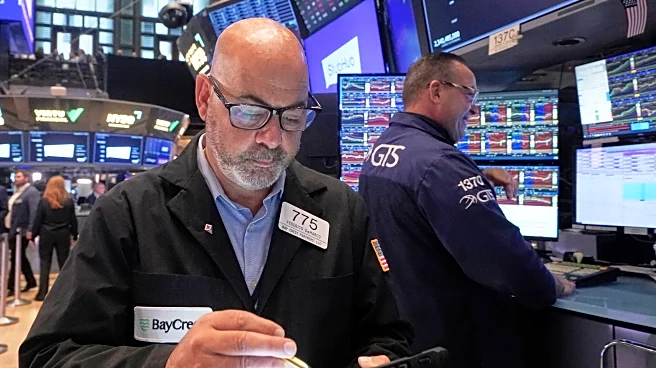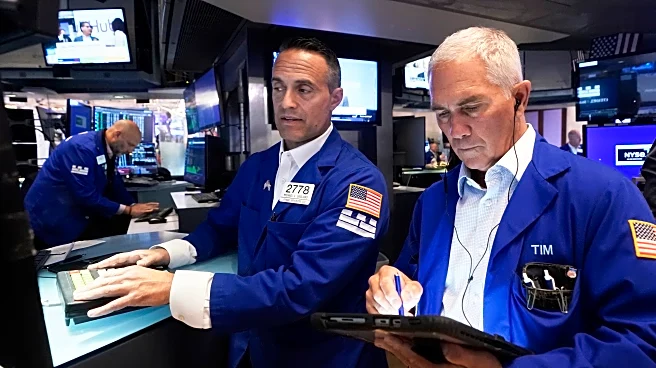What's Happening?
The U.S. Federal Reserve has cut interest rates by a quarter of a percentage point, marking its first rate reduction since December. This decision has positively impacted global stock markets, with Wall Street indices reaching record highs. The Dow Jones Industrial Average, S&P 500, and Nasdaq Composite all experienced gains, while European shares also saw a slight increase. The rate cut has fueled investor optimism, with expectations that central bank actions will continue to support stock market growth. However, the Federal Reserve has emphasized a cautious approach, focusing on data-dependent decisions rather than a series of rate cuts. The bond market has shown mixed signals, with concerns about government debt affecting investor sentiment. Oil prices have declined due to worries about fuel demand, despite the typical boost from a rate cut.
Why It's Important?
The Federal Reserve's decision to cut interest rates is significant for the U.S. economy and global markets. Lower interest rates can stimulate economic growth by making borrowing cheaper, encouraging investment and spending. This move is expected to support stock market growth, benefiting investors and companies. However, the cautious approach by the Federal Reserve indicates uncertainty about the economic outlook, which could affect market stability. The mixed signals from the bond market highlight concerns about government debt, which could impact long-term economic health. Additionally, the decline in oil prices reflects ongoing challenges in the energy sector, affecting related industries and consumer prices.
What's Next?
Investors are closely monitoring potential developments, including a call between President Trump and Chinese President Xi Jinping, which may address trade issues and the TikTok deal. The outcome of this call could influence market dynamics and international relations. The Federal Reserve's future actions will be guided by economic data, with potential rate adjustments depending on economic conditions. Stakeholders, including businesses and policymakers, will need to navigate the implications of these decisions on economic growth and stability.




